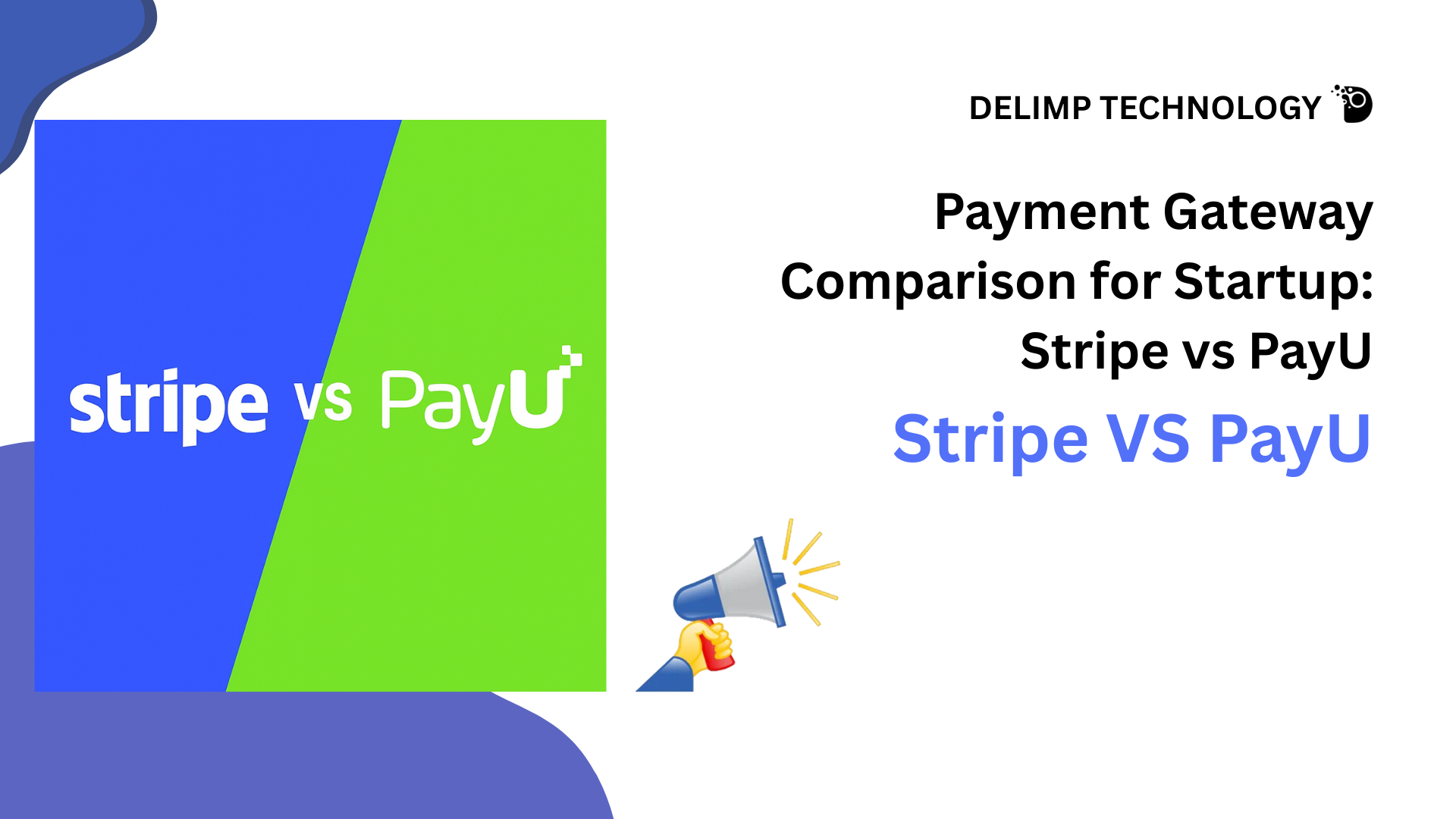With the explosive growth of e-commerce, the payment gateway industry is booming and is projected to reach $106.4 billion by 2030. Yet, here’s the catch: nearly 70% of online shopping carts are abandoned before checkout, costing businesses billions each year. Why? Common reasons include mandatory account creation, limited payment options, high transaction fees, complex checkout processes, and poor security. The solution lies in offering a seamless, secure, and user-friendly payment gateway. A smooth checkout not only improves conversions but also builds trust and boosts customer satisfaction. But with so many providers out there, which one should you choose? Stripe or PayU are two leading gateways, but each has its strengths depending on your goals. Let’s dive into the essentials and compare leading options.
What are Payment Gateways?
Payment gateways are secure platforms that facilitate digital transactions by connecting customers, merchants, and financial institutions. They ensure that payments are processed safely across websites, mobile apps, and even in-store systems.
Beyond processing payments, gateways also provide data insights to help businesses optimize performance. Depending on your business needs, different payment systems can offer varying levels of flexibility, cost, and global reach.
Here are the core tasks handled by gateways:
- Authorization: Verifies whether the customer has sufficient funds before completing the sale.
- Capture: Collects payment from the customer once the order is confirmed.
- Sale: Combines both authorization and capture for instant transactions.
- Refunds: Returns money when a purchase is canceled.
- Void: Cancels a transaction before funds are transferred.
Main Types of Payment Gateways
There are four primary types of Payment Gateway Integrations, each offering different levels of control and integration complexity.
1. Hosted Payment Gateway
Customers are redirected to the Payment Service Provider (PSP) page to enter payment details. It’s easy to set up but offers minimal customization.
Examples: PayPal, Amazon Pay.
2. API-Hosted Payment Gateway
Payment details are entered directly on the merchant’s checkout page via an API. It offers a customized user experience, but requires technical expertise.
Example: Stripe.
3. Self-Hosted Payment Gateway
The business manages the entire process on its own server. This provides maximum control and flexibility, but requires advanced technical skills, strong security, and PCI compliance.
4. Local Bank Integration Gateway
A direct link with a local bank’s system, often region-specific. Efficient for local businesses, but limited in global reach.
Examples: Klarna (Europe), UnionPay (China), Rede (Brazil).
How Do Payment Gateways Work?
The process is lightning-fast, usually under 3 seconds, but here’s what happens behind the scenes:
- Customer checkout: Customer enters card details (number, expiry, CVV, etc.).
- Encryption & security check: Data is encrypted and sent securely to the processor.
- Authorization request: Processor asks the customer’s bank to validate funds.
- Authorization response: Bank confirms approval or declines the request.
- Funds transfer: If approved, the processor moves funds to the merchant account.
- Confirmation: Both merchant and customer get payment confirmation instantly.
Payment Gateway Integration: Where to Start?
Integrating a gateway requires careful planning:
- Compare providers: Check fees, payment methods, security, and platform compatibility.
- Merchant account setup: Some gateways require it, while others bundle it.
- Get API keys: These connect your site or app securely to the gateway.
- Choose integration type: Hosted page (easy setup) or custom API integration (more control).
- Develop connection: Embed a button (hosted) or write secure API code (custom).
- Test thoroughly: Use test data to simulate transactions and catch errors.
- Go live: Launch the integration and monitor real-time payments.
Key Factors in Choosing a Payment Gateway
When comparing providers, consider these crucial aspects:
- Transaction fees: Look at setup costs, monthly fees, and per-transaction charges.
- Payment methods supported: Ensure options like credit/debit cards, wallets, and BNPL align with your audience.
- Security: PCI compliance, encryption, and fraud prevention are non-negotiable.
- Global reach: If you sell internationally, choose gateways that support multiple currencies and regions.
- Ease of integration: Check if you have the technical expertise required.
- Customer support: Reliable 24/7 support is vital for resolving payment issues quickly.
Popular Payment Gateway Providers
Stripe
Stripe is widely recognized for its user-friendly interface. Its extensive feature set makes it a top choice for businesses of all sizes. It supports a variety of payment models, including subscriptions, invoicing, and advanced fraud prevention tools. Stripe Payment Gateway Integration Service supports major credit and debit cards. It also enables payments through digital wallets such as Apple Pay and Google Pay. Additionally, it supports services like Clearpay and Klarna. Stripe supports 135+ currencies. It integrates seamlessly with third-party systems, ranging from shopping carts to analytics and email tools. Stripe excels in mobile commerce and platform-based payments. This makes it a favorite among startups and established enterprises.
Pricing: Stripe charges a flat fee of 2.9% + $0.30 per successful card transaction. Additional fees may apply, such as 0.5% for manually entered cards, 1.5% for international cards, and 1% for currency conversion.
Key Strengths:
- Strong support for mobile and digital wallet payments
- Wide range of third-party integrations
- Flexible and customizable checkout experience
- Advanced features for scaling businesses
- Ideal for startups and global companies alike
Points to Consider:
- Transaction fees can become costly for high volumes
- Reports of accounts being frozen or terminated unexpectedly
- Limited support for certain merchant categories (MCCs)
- Customer service response times can be slow
PayU
PayU is a global payment service provider operating in over 50 markets. It has a strong presence in regions like Colombia, Poland, the Czech Republic, Romania, and India. One of its biggest advantages is the ability to process payments in local currencies. This caters to customer preferences in emerging and high-growth markets. PayU Payment Gateway Integration Service supports a wide range of payment methods. These include credit cards, e-wallets, bank transfers, and even cash payments. This variety makes it highly versatile for businesses targeting diverse audiences.
To ensure secure transactions, PayU combines machine learning algorithms with manual reviews to detect and prevent fraud effectively. It also offers customizable features. These include invoicing, subscription management, and real-time analytics. Merchants gain the flexibility to tailor solutions to their business needs.
Pricing: PayU charges a registration fee along with a 2.3% transaction fee. There is also a fixed fee per transaction depending on the chosen currency.
Key Strengths:
- Competitive and affordable pricing
- Wide range of payment methods
- Strong support for local currency transactions in global markets
Points to Consider:
- Advanced features (e.g., subscription management, cross-border authentication) may require developer expertise
- Limited multilingual support in some smaller markets
- Transaction confirmation times can occasionally be slow
Conclusion
A well-chosen payment gateway can dramatically improve your conversion rates, reduce cart abandonment, and strengthen customer trust. If your focus is global expansion, Stripe or PayU might be the right fit. For local businesses, Square and Authorize.net offer reliable solutions. The key is to match your gateway to your business model, customer preferences, and growth goals.
For your e-commerce company, selecting the appropriate payment gateway might make all the difference. Delimp Technology can assist you in integrating the best third-party solution. This solution suits your requirements. It could be PayPal, PayU, Stripe, or another one.





